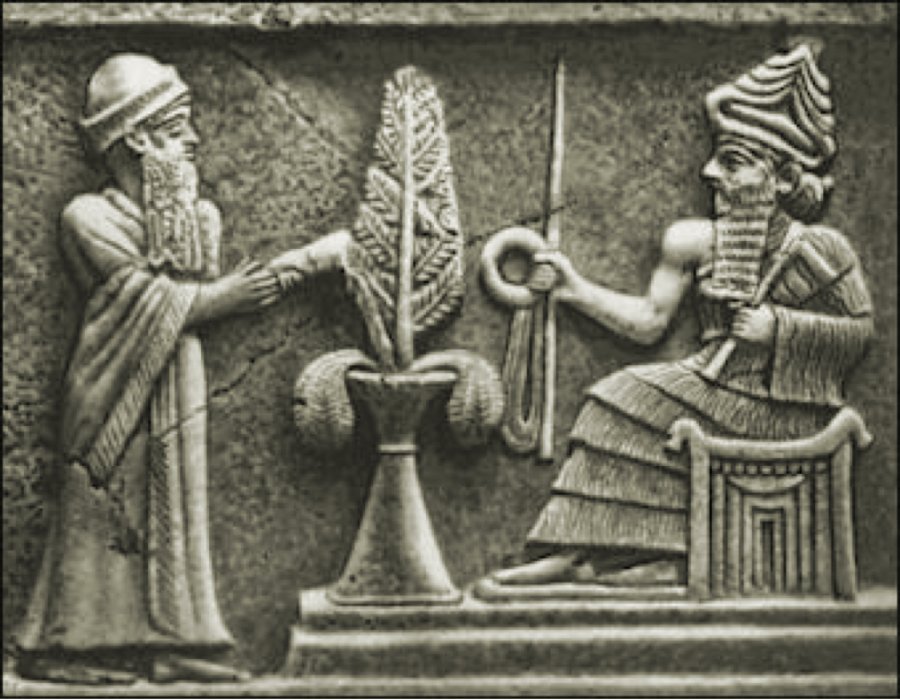Ur-Nammu – Popular And Accomplished Ruler Of Sumer
A.Sutherland - AncientPages.com – Ur-Nammu was a Sumerian king who reigned about 2112-2095 BC and was a founder of the Third Dynasty of Ur.
Initially, he held the position of Sagina - general manager or military - in the city of Ur on behalf of the king of Uruk, and its military activities contributed to an advantage over the Gutians, who had conquered Akkad, controlled of Sumer and the rest of Mesopotamia.
He revitalized the economy of Sumer and encouraged the pursuit of culture and art. This period is known as the Sumerian Renaissance and Ur-Nammu’s efforts were not in vain. Stela or Ur-Nammu. Credit: Public Domain
After the death of King Utu-hengal, Ur-Nammu seized power in Sumer and as an independent ruler of united several Sumerian cities, and then won a momentous victory over the forces of the enemy, driving him out of the country.
He called himself the brother of Gilgamesh and is widely remembered for his legal code, the Code of Ur-Nammu, the oldest known surviving example in the world. His laws known as the laws of Ur-Namma (or Code of Ur-Nammu ca. 2112-2095 BC) represent the first full set of written code found, and it is the oldest surviving tablet containing a law code that was written circa 2100 BC.
Ur-Nammu proved to be a good politician. He understands the current situation of his country, which was not the same as two hundred years ago when it lost its independence, conquered by the Assyrian king Sargon the Great.
Bust of King Ur-Nammu. Credit: Metropolitan Museum of Art - Right: The object on his head (image to the left) represents a basket of Earth. Image source
Ur-Nammu was also a good host, reformer of taxes and military forces, and builder of temples, roads, and canals; mud-brick stamped with the name of king Ur-Nammu was found in Nippur, Uruk, Eridu, Kish, Larsa, and the Ummah.
In fact "the Imperial city of Ur revived Sumer when King Ur-Nammu in 2112 BCE founded the Third Dynasty of Ur. He ruled almost the whole of Sumer and Akkad. The Sumerian Renaissance that occurred during the Third Dynasty of the city of Ur after the collapse of the Akkadian Empire between 2047-1750 BCE brought a cultural revival to Sumer. King Ur-Nammu made cultural advancements a goal of his administration and maintained peace so that the arts and technology could flourish..." we read in Henry Freeman's "Sumerians".
Many constructions (stepped temples – ziggurats, including the Great Ziggurat of Ur) originate from this Sumerian period. The construction of temples initiated by Ur-Nammu was not only a religious but also a political act.
By building and restoring temples of the gods, Ur-Nammu made Sumer strong because he appealed to the feelings of his people and united them with gods, making him a ruler - important and respected.
He revitalized the economy of Sumer and encouraged the pursuit of culture and art. This period is known as the Sumerian Renaissance, and Ur-Nammu’s efforts were not in vain.
His reputation among his subjects is clearly seen in stele and inscriptions. Then ruler was considered to have restored the ancient state of affairs by re-establishing Sumerian rule and reinforcing it. It was necessary because there was the growing power of the Amorite nomads in the Syrian steppe, and it was dangerous.
Ur-Nammu was killed during the battle against the Gutians, who returned and endangered the cities of Sumer in 2030 BC. Ur-Nammu led his army to meet them. According to the Sumerian poem ‘The Death of Ur-Nammu and His Descent to the Underworld’, his army scattered, fleeing the battlefield. and “his body lay tossed aside like a broken urn.”
And yet, his great dynasty survived and lasted for over 100 years. He was succeeded by his son Shulgi, after an eighteen-year reign, and Shulgi of the Third Dynasty of Ur (circa 2094-2047 BC) was also a great personality. He carried out a punitive campaign against the Gutians and he supported a policy of territorial or economic expansion. He was at war on a regular basis, clashing with Hurrian invaders, and finally, he was forced to oversee the construction of a wall to keep the Amorites out.
Written by – A. Sutherland - AncientPages.com Senior Staff Writer
Updated on July 28, 2021
Copyright © AncientPages.com All rights reserved. This material may not be published, broadcast, rewritten or redistributed in whole or part without the express written permission of AncientPages.com
Expand for referencesReferences:
H. Crawford, Sumer and the Sumerians
Kriwaczek, P. Babylon: Mesopotamia and the Birth of Civilization
More From Ancient Pages
-
 Ancient DNA Yields Surprising Findings On World’s Earliest Seafarers
Archaeology | Jun 30, 2022
Ancient DNA Yields Surprising Findings On World’s Earliest Seafarers
Archaeology | Jun 30, 2022 -
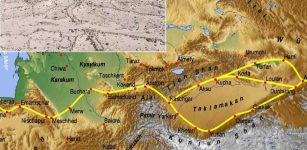 Satellite Images Revealed Lost Ancient Irrigation System In Desert-Like Region Of China
Ancient Technology | Jan 6, 2018
Satellite Images Revealed Lost Ancient Irrigation System In Desert-Like Region Of China
Ancient Technology | Jan 6, 2018 -
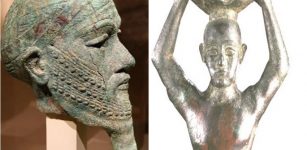 King Ur-Nammu – King Of Ur, King Of Sumer And Akkad – The One Who Built The Temple Of God Enlil
Ancient History Facts | Aug 30, 2015
King Ur-Nammu – King Of Ur, King Of Sumer And Akkad – The One Who Built The Temple Of God Enlil
Ancient History Facts | Aug 30, 2015 -
 Ancient Mesopotamian Discovery Changes Our Understanding Of Early Agriculture Practices
Archaeology | Jan 17, 2022
Ancient Mesopotamian Discovery Changes Our Understanding Of Early Agriculture Practices
Archaeology | Jan 17, 2022 -
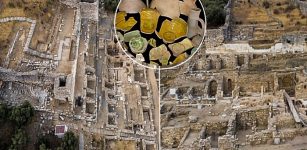 Cisterns Unearthed In Metropolis, Turkey Give Insight Into Daily Life Of Its Inhabitants 1,500 Years Ago
Archaeology | Jan 5, 2021
Cisterns Unearthed In Metropolis, Turkey Give Insight Into Daily Life Of Its Inhabitants 1,500 Years Ago
Archaeology | Jan 5, 2021 -
 Two 1,800-Year-Old Sarcophagi Of Wealthy People Accidentally Found At Ramat Gan Safari Park
Archaeology | Feb 22, 2021
Two 1,800-Year-Old Sarcophagi Of Wealthy People Accidentally Found At Ramat Gan Safari Park
Archaeology | Feb 22, 2021 -
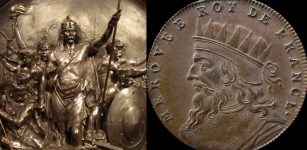 Merovech – Legendary King Of The Franks And The Merovingian Dynasty
Featured Stories | Jan 18, 2019
Merovech – Legendary King Of The Franks And The Merovingian Dynasty
Featured Stories | Jan 18, 2019 -
 Fascinating Slavic Mythology Offers Surprising Insight Into The Mystery Of Reincarnation
Featured Stories | Oct 13, 2015
Fascinating Slavic Mythology Offers Surprising Insight Into The Mystery Of Reincarnation
Featured Stories | Oct 13, 2015 -
 The Curse Of Chief Chocorua Who Died On The Mountain That Bears His Name
Featured Stories | Mar 9, 2019
The Curse Of Chief Chocorua Who Died On The Mountain That Bears His Name
Featured Stories | Mar 9, 2019 -
 Brief History Of Abortion – From Ancient Egyptian Herbs To Fighting Stigma Today
Featured Stories | Oct 3, 2023
Brief History Of Abortion – From Ancient Egyptian Herbs To Fighting Stigma Today
Featured Stories | Oct 3, 2023 -
 Similarities And Differences Between Living Spaces Of Neanderthals And Homo Sapiens
Archaeology | Apr 9, 2024
Similarities And Differences Between Living Spaces Of Neanderthals And Homo Sapiens
Archaeology | Apr 9, 2024 -
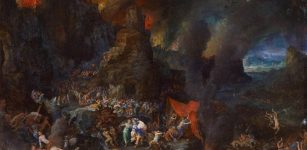 Hades – Land Of The Dead In Greek Beliefs Offered Punishment And Paradise Full Of Harmony
Featured Stories | Aug 15, 2019
Hades – Land Of The Dead In Greek Beliefs Offered Punishment And Paradise Full Of Harmony
Featured Stories | Aug 15, 2019 -
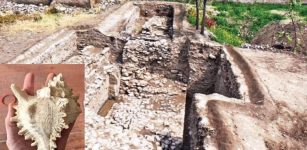 Second Gate Of Bazira And Unique Artifacts Discovered In The Ancient City Of Alexander The Great
Archaeology | Mar 29, 2022
Second Gate Of Bazira And Unique Artifacts Discovered In The Ancient City Of Alexander The Great
Archaeology | Mar 29, 2022 -
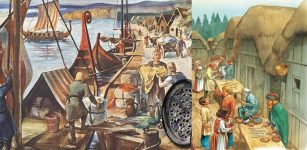 Félag – Ancient Viking Company Organized Trade Finance
Ancient History Facts | May 4, 2018
Félag – Ancient Viking Company Organized Trade Finance
Ancient History Facts | May 4, 2018 -
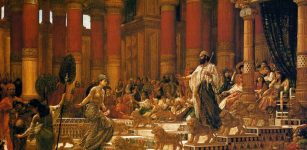 The Magnificent Ancient ‘Flying Airship’ Of King Solomon
Featured Stories | Aug 27, 2018
The Magnificent Ancient ‘Flying Airship’ Of King Solomon
Featured Stories | Aug 27, 2018 -
 Did Queen Nitocris Build A Secret Underground Chamber To Commit Murder?
Featured Stories | Nov 12, 2020
Did Queen Nitocris Build A Secret Underground Chamber To Commit Murder?
Featured Stories | Nov 12, 2020 -
 How Did Ancient Civilizations Make Sense Of The Cosmos And What Did They Get Right?
Civilizations | Mar 7, 2022
How Did Ancient Civilizations Make Sense Of The Cosmos And What Did They Get Right?
Civilizations | Mar 7, 2022 -
 Where Does The Expression ‘Saved By A Bell’ Come From?
Ancient History Facts | Oct 16, 2019
Where Does The Expression ‘Saved By A Bell’ Come From?
Ancient History Facts | Oct 16, 2019 -
 Strange Radiation Case – Medical Files Secretly Erased?
Featured Stories | Sep 13, 2019
Strange Radiation Case – Medical Files Secretly Erased?
Featured Stories | Sep 13, 2019 -
 Native Americans And European Legends Tell Peculiar Beings From The Sky Still Live On The Earth
Featured Stories | May 16, 2018
Native Americans And European Legends Tell Peculiar Beings From The Sky Still Live On The Earth
Featured Stories | May 16, 2018

